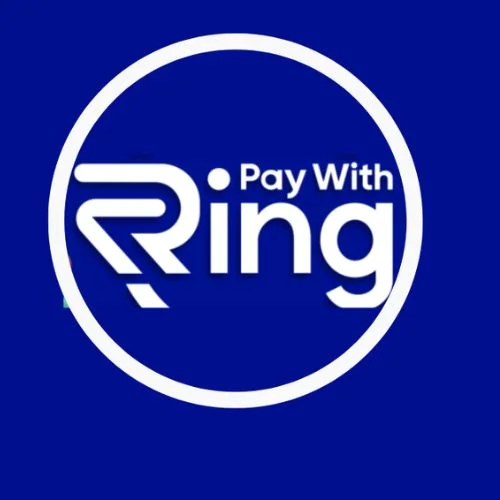Series funding is a type of investment that occurs in the early stages of a startup’s growth, usually after seed funding, and before later-stage funding rounds such as Series B or C funding.
In series funding, a startup typically receives a significant amount of money from venture capitalists (VCs) or angel investors to fuel its growth and scale its operations. The funding round is called a “series” because it is usually the second or third round of funding that a startup receives after its initial seed round.
A fledgling start-up armed with a groundbreaking business idea aims to establish its operations. Despite starting small, the company’s model and products validate their potential, and with the aid of support from family, friends, and the founders’ own financial resources, the business gradually flourishes.
As the customer base increases, the company expands its goals and operations, swiftly rising in rank among its competitors, earning significant value, and exploring the potential for future growth, including new office locations, additional employees, and even an initial public offering (IPO).

The initial stages of the hypothetical enterprise outlined earlier may seem excessively optimistic, but in actuality, they frequently are. While a minute proportion of companies attain substantial growth devoid of external support, the vast majority of thriving startups must participate in various fundraising initiatives by means of external investment rounds.
These fundraising rounds afford external investors the opportunity to infuse capital into a nascent enterprise in exchange for equity, which comprises partial ownership of the company. The conversations surrounding Series A, Series B, and Series C funding rounds typically pertain to the process of augmenting a business through external investment.
What Are Funding Rounds for Startups?

Startups have various options for securing funding, depending on their industry and investor interest. Seed funding or angel investor funding are common at the initial stage, followed by Series A, B, and C funding rounds and other fundraising efforts if necessary. These funding rounds are essential for businesses that require more capital than they can generate through bootstrapping or personal funding.
Each startup has a unique funding path, and the timeline for securing funding can vary from months to years. Startups with revolutionary ideas or a track record of success may bypass some funding rounds and raise capital more quickly. In this article, we’ll examine these funding rounds, how they function, and their differences.
How Funding Rounds Work
Before one can comprehend the intricacies of a funding round, it is imperative to identify the principal players at play. On one end of the spectrum, we have ambitious entrepreneurs seeking to acquire capital for their burgeoning businesses. As their enterprises evolve and progress, they inevitably navigate through a plethora of funding rounds, commencing with seed funding and gradually advancing to Series A, B, and C funding.
On the flip side of the equation, we have potential investors. Despite their predilection towards entrepreneurial ventures and their ambitions, they are also seeking to gain a return on investment. Consequently, the investments made during any phase of the funding process are structured in such a way as to provide the investor or investing firm with partial ownership of the business. Should the enterprise grow and become lucrative, the investor stands to benefit proportionally from their investment.
What Is the Funding Valuation?
Before initiating any round of funding, analysts evaluate the worth of the company based on several factors such as management, previous performance, market size, and risk. The valuation of the business, along with its growth potential and maturity level, are critical factors that differentiate funding rounds. These factors also determine the type of investors that may be interested and the reasons why the company is seeking new capital.
Pre-Seed Funding

The earliest stage of financing a new business, known as “pre-seed” funding, is not typically considered as a formal round of funding as it occurs during the initial stages of the company’s development. During this period, the company founders are establishing their operations and are often the primary sources of funding, along with close friends, supporters, and family members. The duration of this funding stage depends on the company’s nature and the initial costs associated with developing the business idea. Additionally, investors at this stage are unlikely to invest in exchange for equity in the company. Generally, pre-seed investors are the company’s founders themselves.
Seed Funding

Seed funding represents the embryonic stage of equity funding that symbolizes the inaugural official investment garnered by a business venture or enterprise. It’s akin to sowing a tree, where the seed embodies the nascent financial assistance that catalyzes the growth of the organization.
The prosperity of the organization hinges on an array of factors such as revenue, business strategy, and investor devotion, thereby leading to prospective amplification beyond the seed funding juncture.
The principal objective of seed funding is to aid the organization in its preliminary steps, encompassing market analysis and product innovation. This funding furnishes resources that facilitate the delineation of the ultimate product and the target audience, and it authorizes the recruitment of a founding team to execute these goals.
What Is Series A Funding?
Series A funding is the funding round that follows the seed stage of a startup. It is crucial for startups to have a well-developed plan to generate long-term profits. Although seed startups may attract many users with their innovative ideas, they often lack a clear strategy to monetize their business.
Typically, Series A rounds raise between $2 million to $15 million, but this figure has increased due to high valuations in the tech industry, creating unicorns. In 2021, the median amount raised in Series A funding was $10 million.
Investors in Series A funding are not only interested in great ideas but also in startups that have a robust plan to turn those ideas into profitable businesses. As such, the valuation of companies embarking on Series A funding rounds can reach a staggering $24 million. The investors responsible for such rounds typically hail from esteemed venture capital establishments, including but not limited to Sequoia Capital, IDG Capital, Google Ventures, and Intel Capital.
What Is Series B Funding?
Series B rounds are pivotal for startups as they aim to propel their businesses beyond the development stage. At this stage, investors play a vital role in helping companies expand their market reach.
Startups that have successfully navigated seed and Series A funding rounds have demonstrated their potential for success on a larger scale and have developed substantial user bases. Series B funding is crucial in enabling companies to grow their teams and scale their operations to meet increased demand.
One of the essential elements in achieving success at this stage is acquiring high-quality talent. Building a winning product and expanding teams across multiple functions such as business development, sales, advertising, technology, and support requires significant investment.
What Is Series C Funding?
Companies that secure Series C funding are often prosperous and seeking additional investments to expand their operations, innovate new products, or acquire other companies. The objective of this funding is to quicken the growth of the enterprise and generate returns for stakeholders.
One approach to scale up a company’s operations is by acquiring another company. Consider a hypothetical startup that specializes in producing vegetarian meat substitutes, which has already garnered remarkable success in the United States market and is now aiming to extend its presence in Europe. If this startup has a competitor that commands a significant market share and has a competitive advantage, a merger could be a symbiotic collaboration. To finance such an acquisition, Series C funding may be employed, as the lower risk associated with a thriving business enterprise tends to attract more potential investors.















